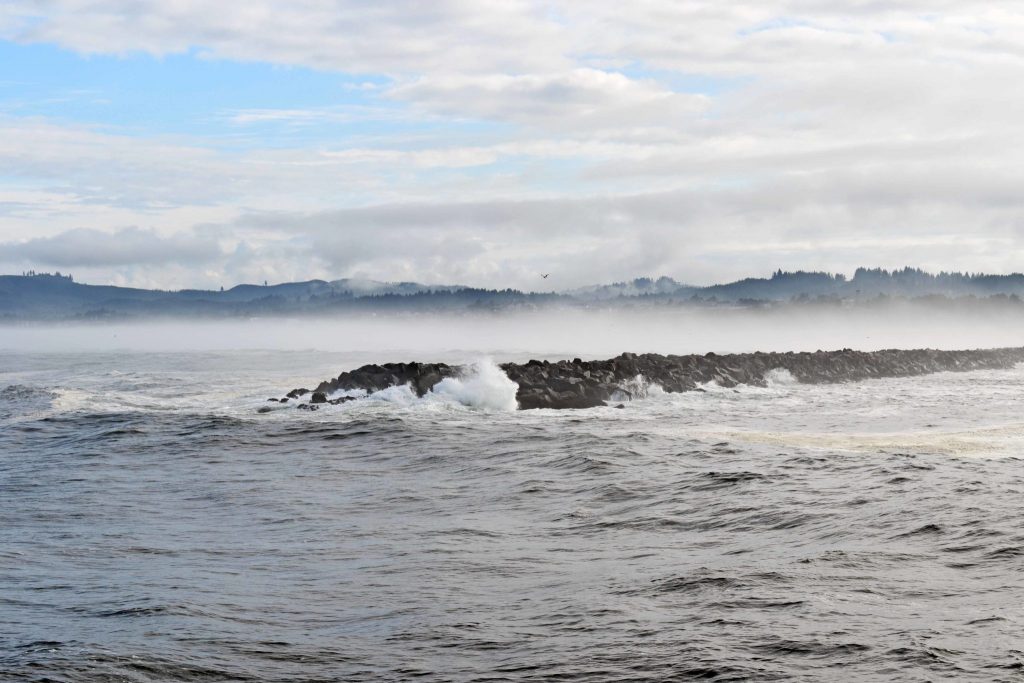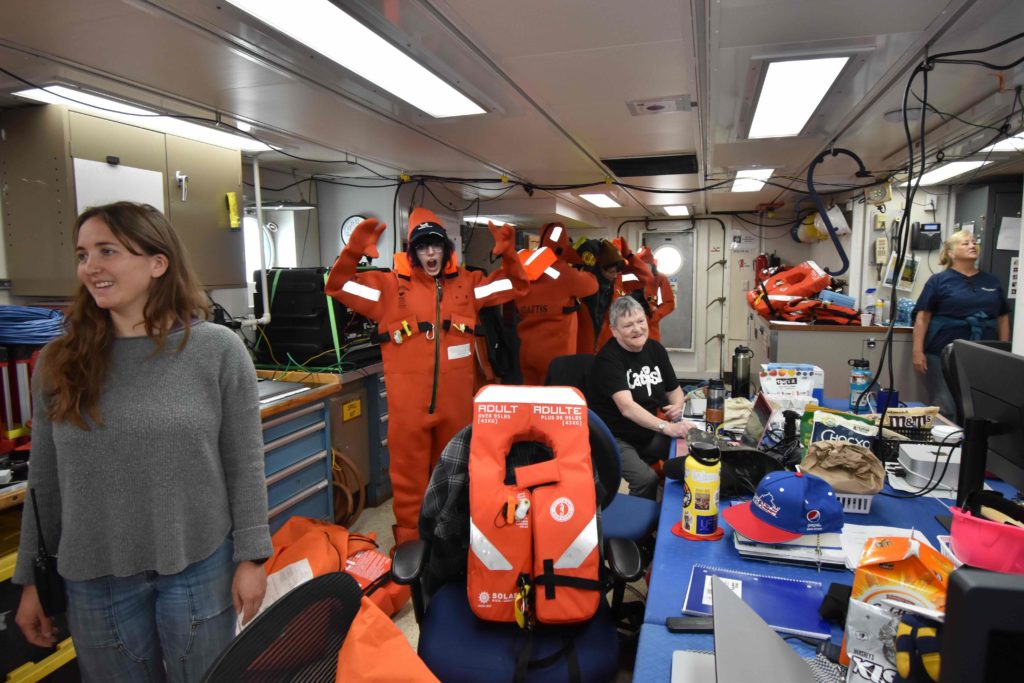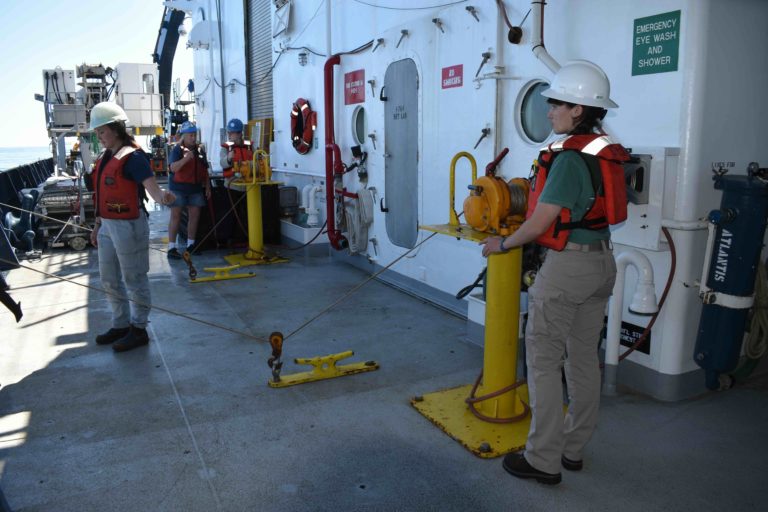The morning of August 17th, was met with much excitement as the R/V Atlantis was scheduled to depart at 0830. The morning was filled with insuring 1) all team members were onboard; 2) all gear was stowed and secured; and 3) that a secondary junction box (benthic experiment platform – BEP), zooplankton sonar, and digital still camera were ready for deployment. With significant eagerness by the “newcomers” for Leg 2, the R/V Atlantis departed under partially cloudy skies to the Oregon Shelf site, ~ 14 miles off Newport. Although the protected Yaquina Bay was calm, transiting through the channel into the Pacific, big rolling swells were a bit ominous across the horizon. Exiting the channel, herds of brown pelicans and sealions on the channel marking buoys met us – always an enjoyable sight.
During the transit, there was a “fire” and boat drill during which time the Atlantis Mates and Science Support Group staff discussed safety at sea, how to use myriad fire extinguishers and emergency breathing apparatus, and all new Leg 2 personnel donned their emergency immersion suits. During this time, the swells grew intermittently larger, and we began to lose various members of our science party to the gods of seasickness.
Upon reaching the Oregon Shelf site ,and after the Chief Sci had discussions with the Jason Expedition Leads (EL’s), a decision was made to postpone dives at the Shelf site and begin an ~ 20 hr transit to the base of Axial Seamount. The Shelf site is a notoriously difficult place to dive, especially with heavy packages latched beneath the vehicle (the BEP weighs ~ 3200 lbs). Here, strong currents and biological material and sediment are so abundant in the water column, that often Jason can’t see its manipulators. At 80 m water depth, there is no “softening”of the impact of waves such as what occurs on deeper dives – the up and down movement is translated into “snapping” of the ROV tether at the termination of the vehicle. This can lead to broken fibers in the tether and the vehicle going dark. Rather than wait 24 hrs for the swell to decrease, it was decided to use the time to transit the 20 hrs to Axial Base for a CTD cast.
The rest of the day was put to good use with finalizing Leg 2 preparation duties, making sure all the infrastructure and instruments were ready for the Axial summit work, training students on the CTD deployments and water sampling, and giving them tours of Jason and training in the ROV control room…it was also a good time for all to get their sea legs.
Tomorrow we dive at the International District Hydrothermal Field!!

Swells crash along the Yaquina Channel jetty. Credit: M. Elend, University of Washington, V25.

Successful donning of immersion suits on Leg 2. Credit: M. Elend, University of Washington, V25.

VISIONS’25 Leg 2 students receive CTD training prior to the first cast. Credit: J. Thirtyacres, University of Washington, V25.
Recent Updates